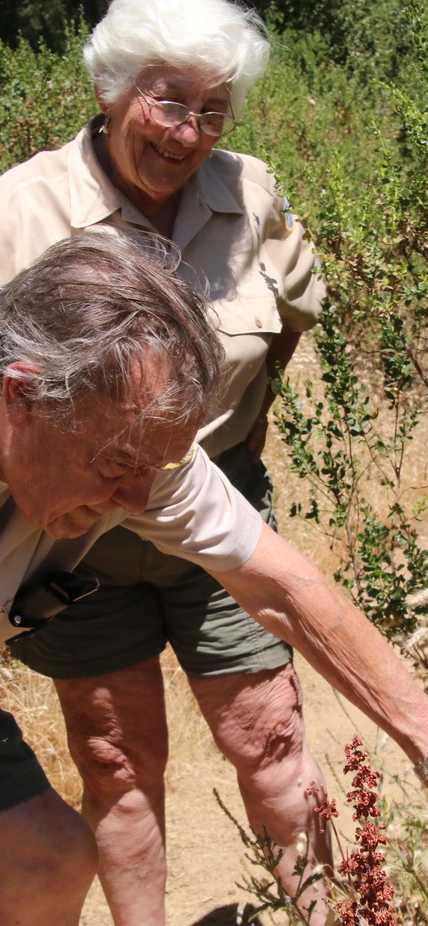Washington, DC— Carnegie’s Winslow Briggs, a giant in the field of plant biology who explained how seedlings grow toward light, died on February 11 at Stanford University Medical Center. He was 90.
Briggs joined Carnegie as the Director of the Department of Plant Biology in 1973 after teaching both at Harvard University—where he completed his bachelor’s degree, master’s degree, and Ph.D.—and at Stanford University. He held the position for two decades, establishing himself as a global leader in plant genetics and physiology, publishing landmark research on the molecular mechanisms that plants and other organisms use to sense and respond to light.
When a plant seedling germinates, it must be able to rapidly position itself to capture light as soon as it emerges from the soil. Briggs and his lab discovered and first characterized a pair of photo-sensitive receptors that mediate this response and enable the plant to grow toward the light so that it can convert solar energy, carbon dioxide, and water into sugar—a process called photosynthesis.
Over the years, work by Briggs and others revealed that these two receptors contribute to a plant’s efficiency in other ways, including leaf growth and orientation, as well as the opening of the pores on a leaf’s surface through which it takes in the carbon dioxide needed to manufacture sugars.
“Plants are stationary, which means that they have to evolve complex methods to take advantage of every available resource, including sunlight,” explained Zhiyong Wang, Acting Director of Carnegie’s Department of Plant Biology. “Receptors such as those discovered by Winslow, found broadly in both plants and microbes, are a crucial part of not only how plants respond to and take advantage of their environmental conditions, but also how bacteria interact with their animal and plant hosts.”
“Winslow is a proud part of Carnegie’s longstanding tradition of creative approaches to solving fundamental questions in basic research that are critical for understanding the world around us,” added Carnegie President Eric D. Isaacs. “His work has had a monumental impact on plant science, ecology, and agriculture that will continue to be foundational for future generations of investigators.”
Acting Director of Carnegie’s Department of Global Ecology Joe Berry noted that Briggs was also recognized in his youth as an intrepid mountaineer with first ascents of peaks in Canada and Alaska.
“These experiences were perhaps a harbinger of his bold and incisive approach to science,” Berry said. “He was one of the leaders who brought the revolutionary approaches of molecular biology—ignited by the discovery of the structure of DNA in the 1950s—to the study of plant biology. As director, he helped and inspired generations of scientists to reach for and attain their own lofty goals.”
After retirement in 1993, Briggs remained extremely influential in science as he pursued research on photoreceptors in plants and bacteria until the day of his death. Most recently, his team was working on elucidating the role of photoreceptors in the process by which symbiotic root bacteria can provide nitrogen to certain plants.
He also volunteered at Henry W. Coe State Park for 40 years, about which he published a book of trails and where, in 2007, he organized volunteers to study recovery after a massive wildfire and discovered that chemicals in smoke stimulate the sprouting of seeds of rare plants that may lie dormant for many years until awoken by fire.
Briggs was a member of the National Academy of Sciences, the American Academy of Arts and Sciences, the Academy of Sciences Leopoldina, the Botanical Society of America, the American Society of Plant Physiologists, the American Society of Photobiology, the American Association for the Advancement of Sciences, and the California Academy of Sciences.
In 2007, the American Society of Plant Biologists, of which he was president in 1975 and 1976, gave him the Adolph E. Gude, Jr. Award for his “service to the plant science community.” Two years later, the Japan Society for the Promotion of Science awarded him the prestigious International Prize for Biology for his “outstanding contributions to the advancement of basic research.”
He is survived by his wife, of 63 years, Ann, whom he met while students at Harvard, and by his daughters Marion, Lucia, and Caroline, as well as four grandchildren and one great grandchild.
